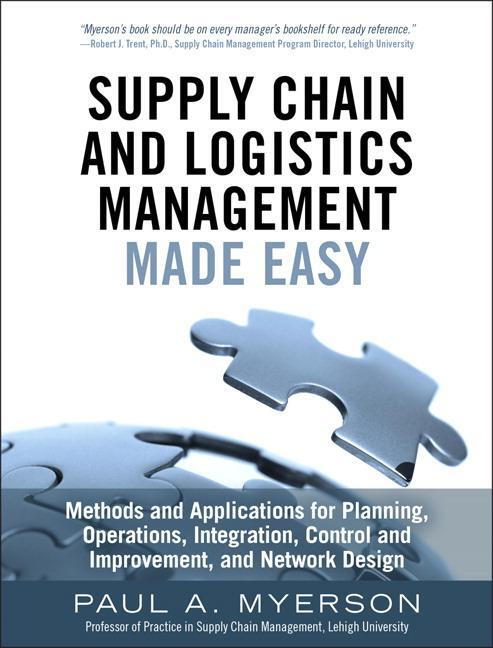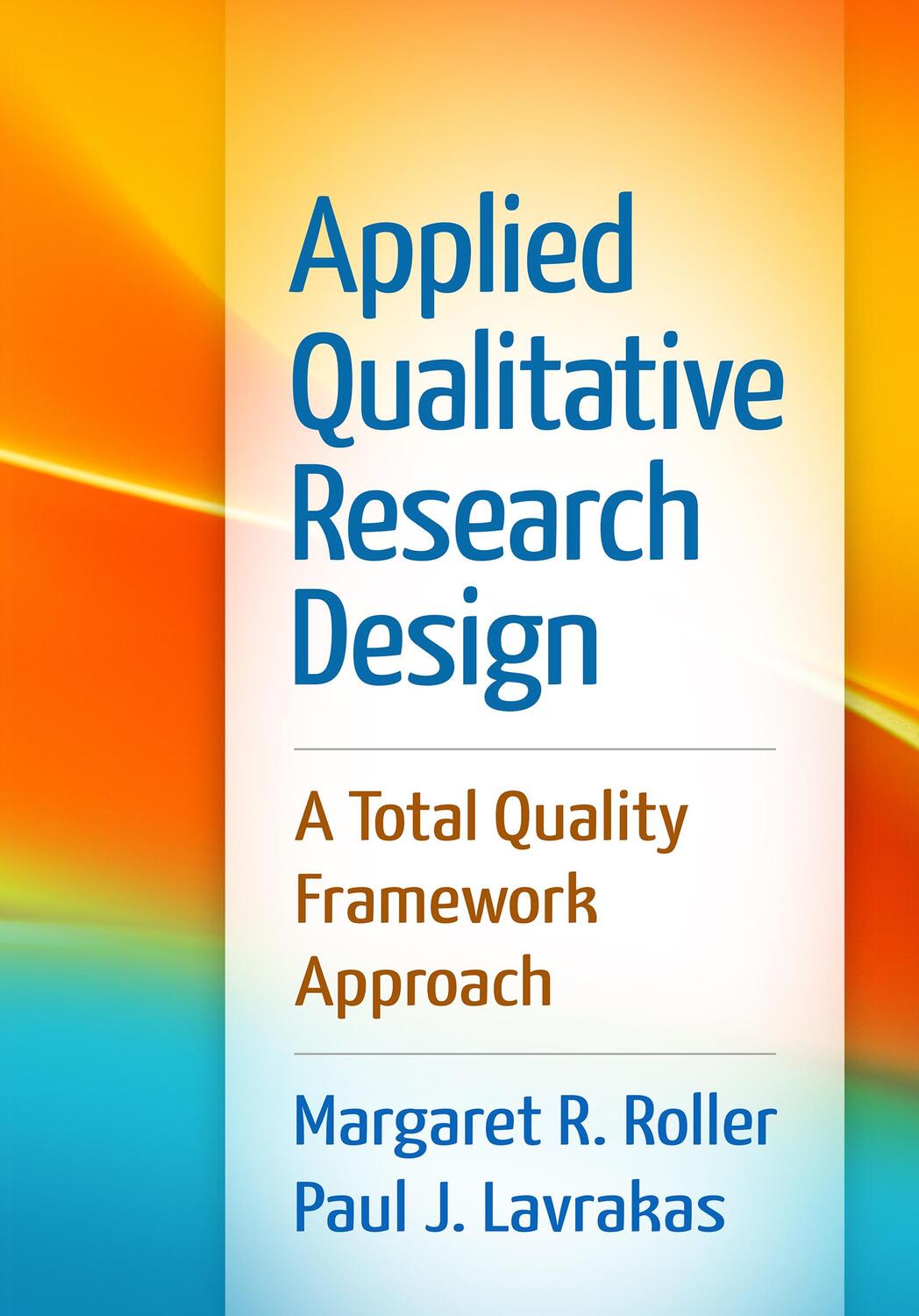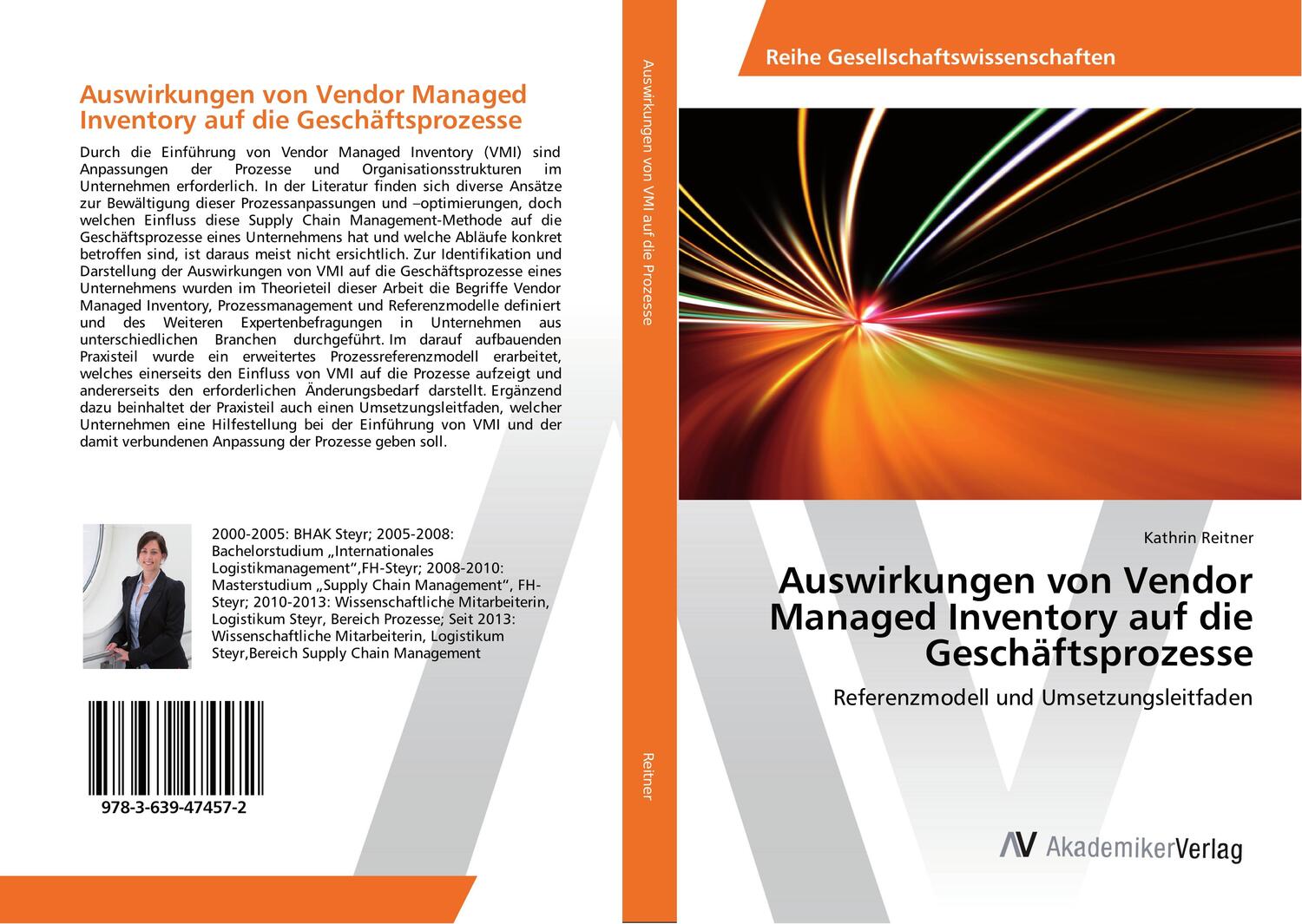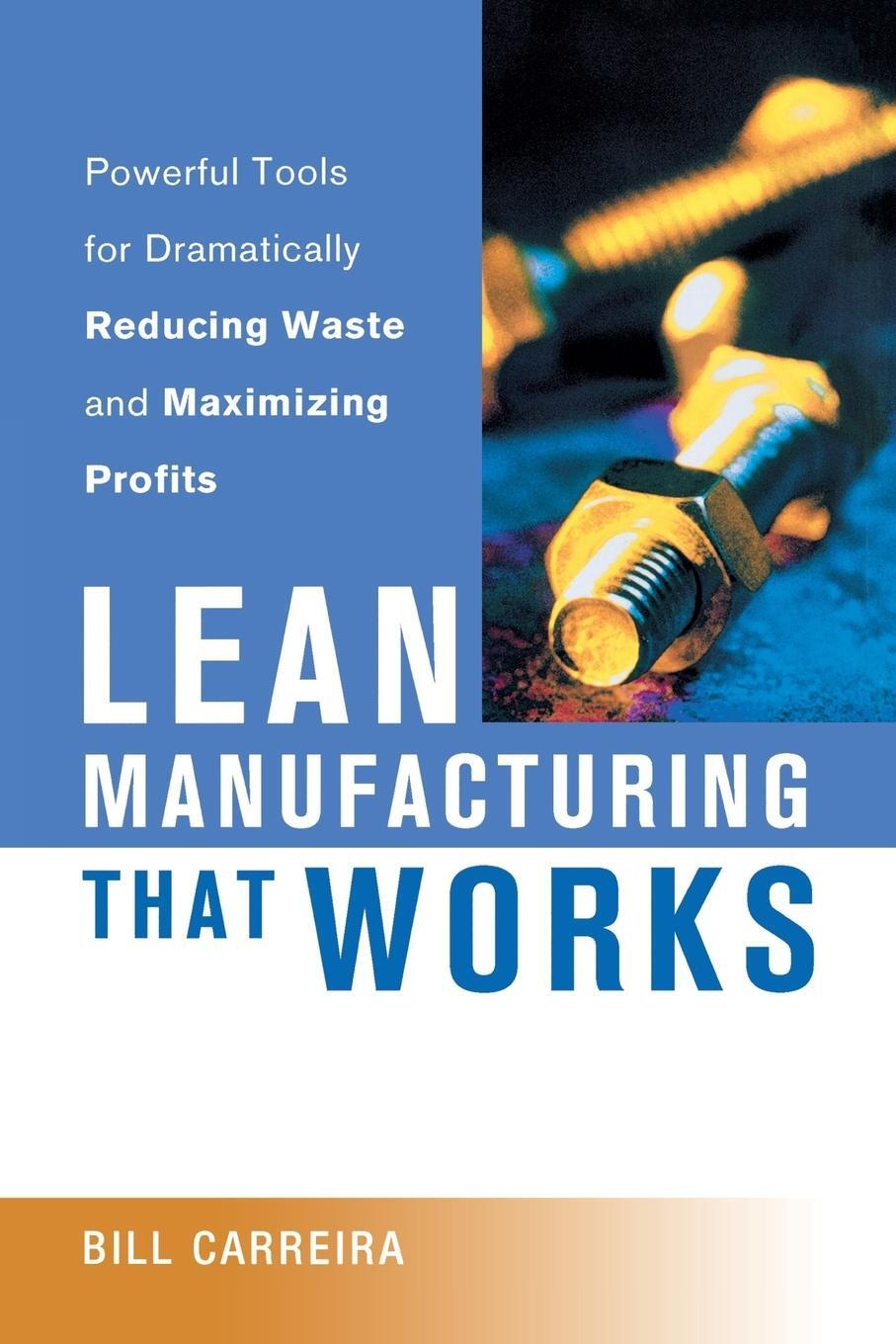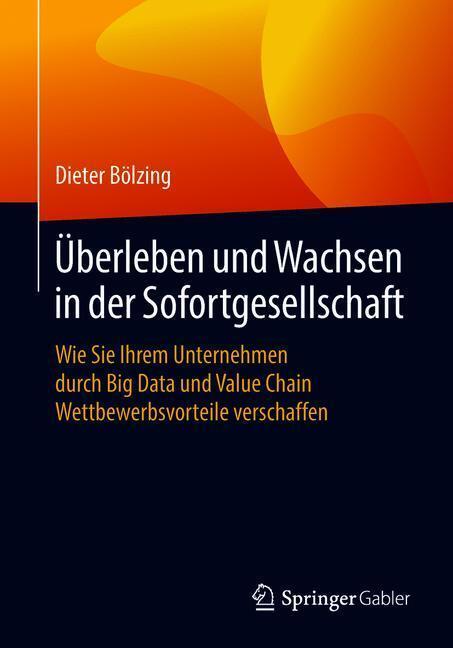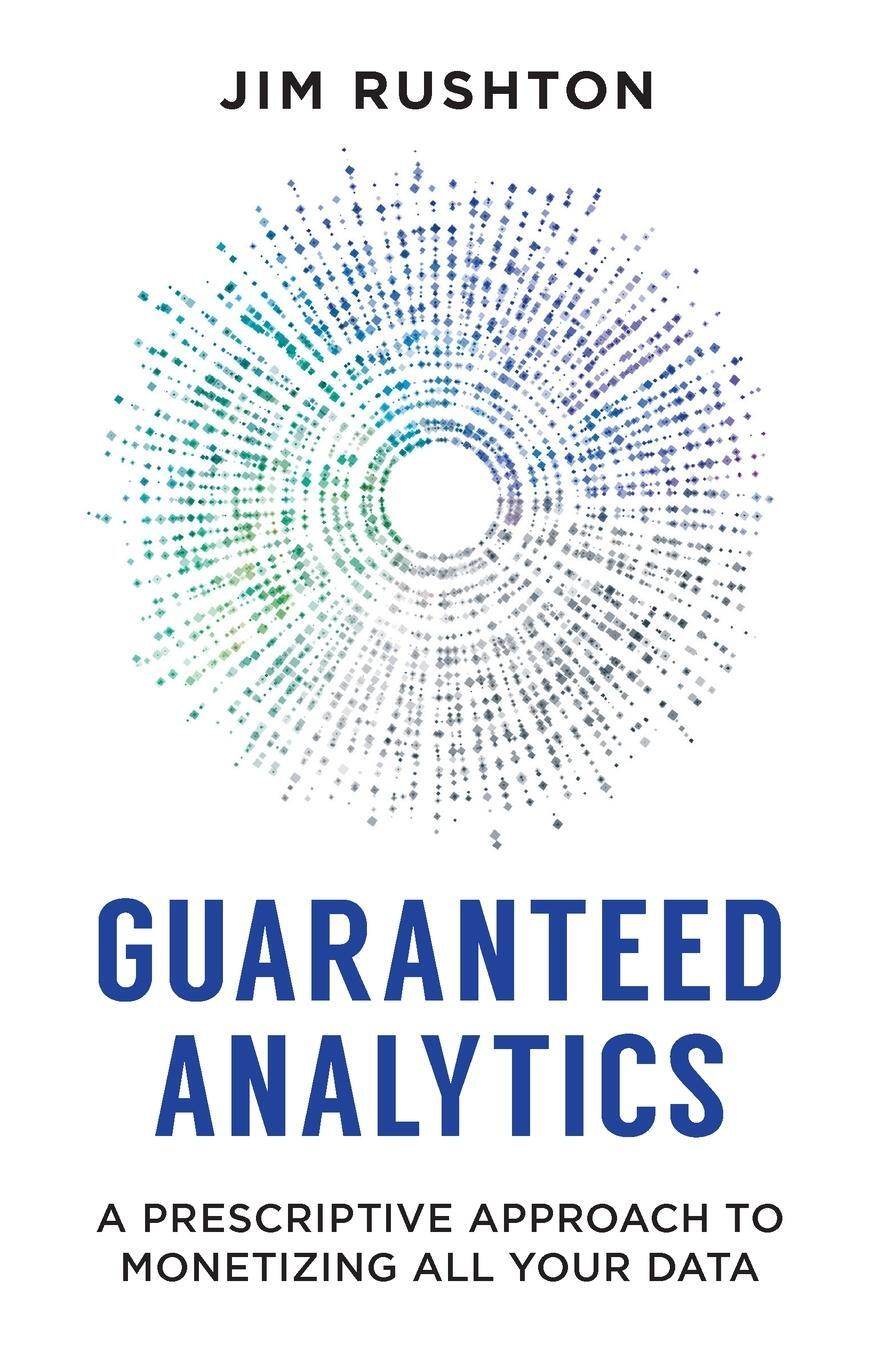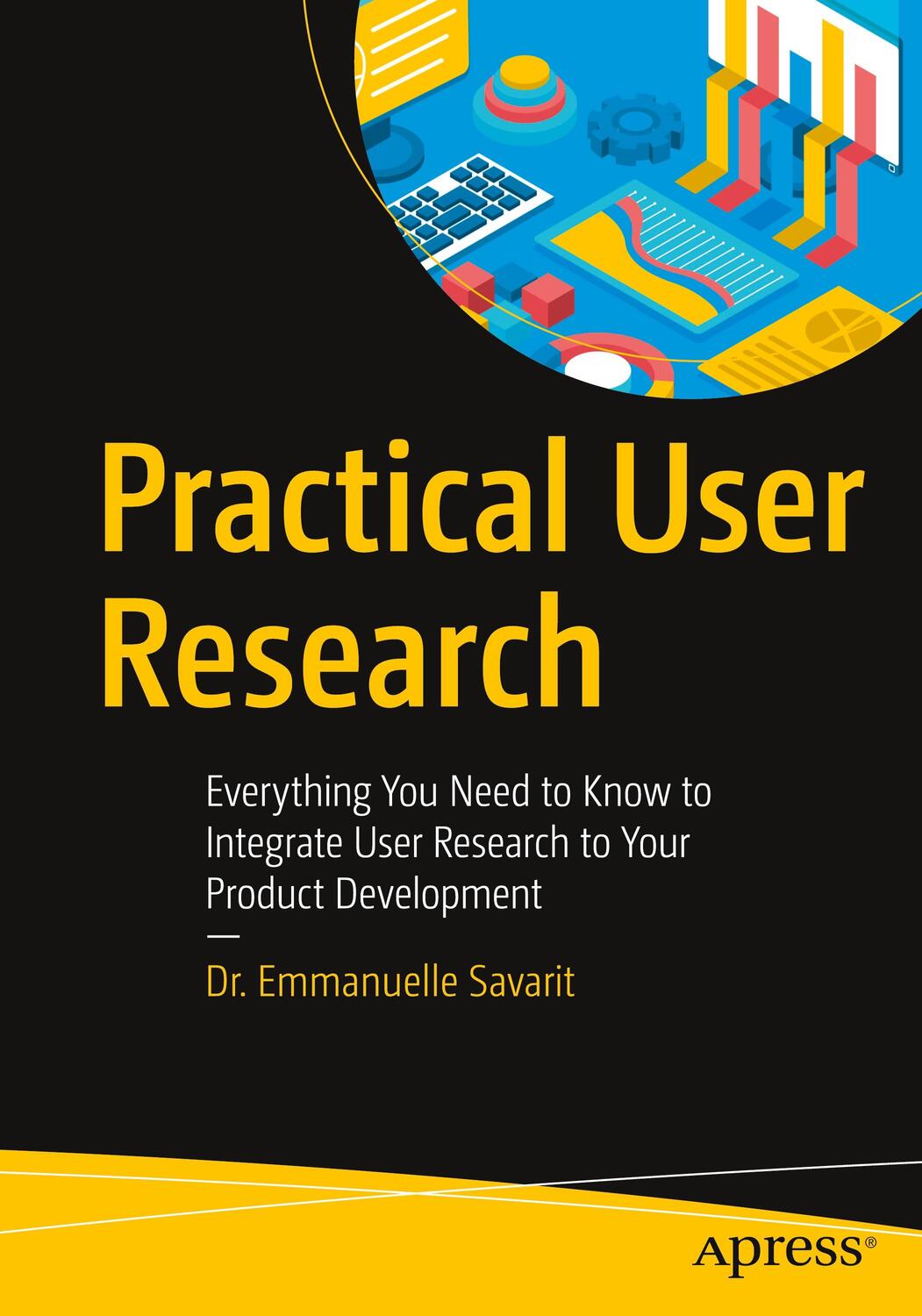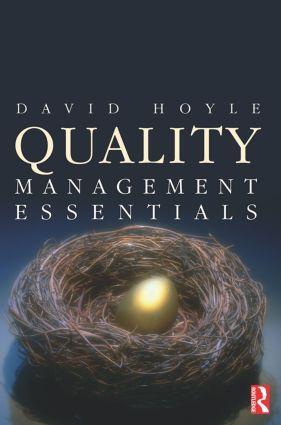68,40 €*
Versandkostenfrei per Post / DHL
Lieferzeit 1-2 Wochen
Today, logistics alone accounts for more than 9.5% of U.S. Gross Domestic Product: over [...] trillion is spent on transportation, inventory, and related logistics activities. TV commercials even extol the virtues of logistics. But few managers or students fully understand the central role that supply chains now play in achieving and maintaining competitive advantage. In Supply Chain and Logistics Management Made Easy, Paul Myerson introduces the modern field of supply chain and logistics management, explains why it has become so important, shows how its pieces all fit together, and presents best practices readers can help to implement in their own roles and organizations.
Myerson explains each concept, tool, and application in easy-to-understand language, offering best practice examples that maximize the "takeaway” for students and professionals alike. He covers a wide range of key topics, including:
- Demand, inventory, and aggregate planning
- Supply chain operations, from procurement and transportation to warehouses, order management, CRM, and reverse logistics
- Supply chain sustainability
- Global supply chain integration, partnerships, collaboration, technology, and networks
- Facility location and layout decisions
- Performance measurement, control, and improvement
- Lean/agile supply chain management techniques
- The future of the discipline: what you need to know to succeed in your supply chain career - and keep succeeding
Today, logistics alone accounts for more than 9.5% of U.S. Gross Domestic Product: over [...] trillion is spent on transportation, inventory, and related logistics activities. TV commercials even extol the virtues of logistics. But few managers or students fully understand the central role that supply chains now play in achieving and maintaining competitive advantage. In Supply Chain and Logistics Management Made Easy, Paul Myerson introduces the modern field of supply chain and logistics management, explains why it has become so important, shows how its pieces all fit together, and presents best practices readers can help to implement in their own roles and organizations.
Myerson explains each concept, tool, and application in easy-to-understand language, offering best practice examples that maximize the "takeaway” for students and professionals alike. He covers a wide range of key topics, including:
- Demand, inventory, and aggregate planning
- Supply chain operations, from procurement and transportation to warehouses, order management, CRM, and reverse logistics
- Supply chain sustainability
- Global supply chain integration, partnerships, collaboration, technology, and networks
- Facility location and layout decisions
- Performance measurement, control, and improvement
- Lean/agile supply chain management techniques
- The future of the discipline: what you need to know to succeed in your supply chain career - and keep succeeding
Paul A. Myerson is a Professor of Practice in Supply Chain Management at Lehigh University and holds a B.S. in Business Logistics and an M.B.A. in Physical Distribution.
Professor Myerson has an extensive background as a Supply Chain and Logistics professional, consultant, and teacher. Prior to joining the faculty at Lehigh, Professor Myerson has been a successful change catalyst for a variety of clients and organizations of all sizes, having over 30 years experience in Supply Chain and Logistics strategies, systems, and operations that have resulted in bottom-line improvements for companies such as General Electric, Unilever, and Church and Dwight (Arm & Hammer).
Professor Myerson created and has marketed a Supply Chain Planning software tool for Windows to a variety of companies worldwide since 1998.
He is the author of the books Lean Supply Chain & Logistics (McGraw-Hill, Copyright 2012) and Lean Wholesale and Retail (McGraw-Hill, Copyright 2014) as well as a Lean Supply Chain and Logistics Management simulation training game and training package ([...], copyright 2012–13).
Professor Myerson also writes a column on Lean Supply Chain for Inbound Logistics Magazine and a blog for Industry Week magazine.
Part I: Supply Chain and Logistics Management: Overview 1
Chapter 1: Introduction 3
Supply Chain Defined 4
SCOR Model 5
An Integrated, Value-Added Supply Chain 7
The Value Chain 7
Leveraging the Supply Chain 8
Supply Chain Strategy for a Competitive Advantage 9
Segmenting the Supply Chain 10
The Global Supply Chain and Technology 11
Chapter 2: Understanding the Supply Chain 13
Historical Perspective 13
Value as a Utility 14
Organizational and Supply Chain Strategy 15
Mission Statement 15
SWOT Analysis 16
Strategic Choices 17
Supply Chain Strategy Elements and Drivers 17
Supply Chain Strategy Methodology 19
Supply Chain Opportunities and Challenges 23
Supply Chain Talent Pipeline 26
Career Opportunities in Supply Chain and Logistics Management 27
Growing Demand 27
Part II: Planning for the Supply Chain 31
Chapter 3: Demand Planning 33
Forecasting Used to Be Strictly Like “Driving Ahead,
Looking in the Rearview Mirror” 34
Forecasting Realities 35
Types of Forecasts 36
Demand Drivers 36
Forecasting Process Steps 37
Quantitative Versus Qualitative Models 38
Qualitative Models 38
Quantitative Models 39
Product Lifecycles and Forecasting 40
Introduction 41
Growth 41
Maturity 41
Decline 41
Time Series Components 42
Time Series Models 43
Associative Models 44
Correlation 45
Seasonality 45
Multiple Regression 46
Forecasting Metrics 46
Forecast Error Measurement 47
Demand Forecasting Technology and Best Practices 48
Chapter 4: Inventory Planning and Control 51
Independent Versus Dependent Demand Inventory 51
Types of Inventory 53
Costs of Inventory 53
Carrying or Holding Costs 54
Ordering Costs 54
Setup Costs 54
Total Cost Minimized 55
Economic Order Quantity Model 56
Basic EOQ Calculation 57
Reorder Point (ROP) Models 57
Fixed-Quantity Model 57
Fixed-Period Model 60
Single-Period Model 61
ABC Method of Inventory Planning and Control 61
Realities of ABC Classification 62
Other Uses for ABC Classification 63
Inventory Control and Accuracy 63
Cycle Counting 63
Key Metrics 64
Inventory Planning and Control Technology 65
Software 65
Hardware 67
Careers 67
Chapter 5: Aggregate Planning and Scheduling 69
The Process Decision 70
Goods and Service Processes 70
Planning and Scheduling Process Overview 72
Aggregate Planning 74
S&OP Process 74
Demand and Supply Options 76
Aggregate Planning Strategies 78
Master Production Schedule 78
Production Strategies 79
System Nervousness 80
Material Requirements Planning 80
Bill of Materials 80
MRP Mechanics 81
Short-Term Scheduling 83
Types of Scheduling 84
Sequencing 84
Finite Capacity Scheduling 85
Service Scheduling 85
Technology 86
Part III: Supply Chain Operations 87
Chapter 6: Procurement in the Supply Chain 89
Make or Buy 90
Outsourcing 90
Other Supply Chain Strategies 91
The Procurement Process 93
Identify and Review Requirements 93
Establish Specifications 94
Identify and Select Suppliers 95
Determine the Right Price 97
Issue Purchase Orders 98
Follow Up to Ensure Correct Delivery 99
Receive and Accept Goods 100
Approve Invoice for Payment 100
Key Metrics 100
Technology 101
Chapter 7: Transportation Systems 103
Brief History of Transportation Systems in America 103
Transportation Cost Structure and Modes 105
Transportation Costs 105
Modes 105
Legal Types of Carriage 110
For Hire 110
Private 110
Transportation Economics 111
Transportation Cost Factors and Elements 111
Rates Charged 114
Effects of Deregulation on Pricing 115
Pricing Specifics 115
Documents 116
Domestic Transportation Documents 116
International Transportation Documents 119
Key Metrics 122
Technology 122
Chapter 8: Warehouse Management and Operations 125
Brief History of Warehousing in America 126
Economic Needs for Warehousing 126
Types of Warehouses 127
Warehouses by Customer Classification 127
Warehouses by Role in the Supply Chain 128
Warehouses by Ownership Type 129
Warehouse Economic Benefits 131
Consolidation 132
Accumulation, Mixing, and Sorting 133
Postponement 134
Allocation 134
Market Presence 135
Warehouse Design and Layout 135
Size of Facility 135
Facility Layout 137
Warehouse Operations 140
Packaging 141
Key Metrics 142
Customer-Facing Metrics 142
Technology 143
Warehouse Management Systems 143
Yard Management Systems 145
Chapter 9: Order Management and Customer Relationship Management. .147
Order Management 148
Order Placement 148
Order Processing 148
Order Preparation and Loading 149
Order Delivery 150
Customer Relationship Management 150
Customer Service 150
Customer Relationship Management 154
Technology 155
Chapter 10: Reverse Logistics and Sustainability 157
Reverse Logistics Activities 157
Repairs and Refurbishing 158
Refilling 159
Recall 159
Remanufacturing 159
Recycling and Waste Disposal 160
Returns Vary by Industry 160
Publishing Industry 160
Computer Industry 160
Automotive Industry 160
Retail Industry 161
Reverse Logistic Costs 161
Reverse Logistics Process 161
Receive 161
Sort and Stage 161
Process 162
Analyze 162
Support 162
Reverse Logistics as a Strategy 162
Using Reverse Logistics to Positively Impact Revenue 162
Other Strategic Uses of Reverse Logistics 163
Reverse Logistics System Design 164
Product Location 164
Product Collection System 164
Recycling or Disposal Centers 165
Documentation System 165
Reverse Logistics Challenges 165
Retailer-Manufacturer Conflict 165
Problem Returns and Their Symptoms 166
Cause and Effect 166
Reactive Response 166
Managing Reverse Logistics 166
Gatekeeping 167
Compacting the Distribution Cycle Time 168
Reverse Logistics Information Technology Systems 168
Centralized Return Centers 168
Zero Returns 169
Remanufacture and Refurbishment 169
Asset Recovery 170
Negotiation 170
Financial Management 170
Outsourcing 170
Reverse Logistics and the Environment 170
Supply Chain Sustainability 171
Green Logistics 171
Chapter 11: Global Supply Chain Operations and Risk Management 173
Growth of Globalization 173
Factors Influencing Globalization 174
Reasons for a Company to Globalize 174
Global Supply Chain Strategy Development 175
International Transportation Methods 177
Ocean 177
Air 177
Motor 178
Rail 178
Global Intermediaries 178
Global Supply Chain Risks and Challenges 178
Questions to Consider When Going Global 179
Key Global Supply Chain Challenges 180
Risk Management 181
Potential Risk Identification and Impact 181
Sources of Risk 182
Supply Chain Disruptions 183
Risk Mitigation 184
Part IV: Supply Chain Integration and Collaboration 187
Chapter 12: Supply Chain Partners 189
Outsourcing 189
Reasons to Outsource 190
Steps in the Outsourcing Process 191
Supply Chain and Logistics Outsourcing Partners 192
Traditional Service Providers 192
Third-Party Logistics Providers 193
Fourth-Party Logistics Service Providers 196
Chapter 13: Supply Chain Integration Through Collaborative Systems 199
Internal and External Integration 200
Internal Integration 200
External Integration 201
Supply Chain Collaboration Methods: A Closer Look 206
Quick Response 206
Efficient Consumer Response 207
Collaborative Planning, Forecasting, and Replenishment 208
Chapter 14: Supply Chain Technology 211
Supply Chain Information 211
Supply Chain Information Needs 213
Supply Chain Software Market 214
Supply Chain Planning 215
Supply Chain Execution 215
Other Supply Chain Technologies 216
SCM System Costs and Options 217
Best-in-Class Versus Single Integrated Solution 217
Consultants 218
Current and Future Trends in Supply Chain Software 218
Short-Term Supply Chain Technology Trends 218
Emerging Supply Chain Technology Trends 219
Part V: Supply Chain and Logistics Network Design 223
Chapter 15: Facility Location Decision 225
The Importance of Facility Location When Designing a Supply Chain 225
Supply Chain Network Design Influencers 226
Types of Distribution Networks 228
Manufacturer Storage with Direct Shipping 228
Manufacturer Storage with Direct Shipping and In-Transit Merge 229
Distributor Storage with Carrier Delivery 230
Distributor Storage with Last-Mile Delivery 232
Manufacturer or Distributor Storage with Customer Pickup 233
Retailer Storage with Customer Pickup 234
Impact of...
| Erscheinungsjahr: | 2015 |
|---|---|
| Fachbereich: | Management |
| Genre: | Wirtschaft |
| Rubrik: | Recht & Wirtschaft |
| Medium: | Buch |
| Seiten: | 352 |
| Inhalt: | Gebunden |
| ISBN-13: | 9780133993349 |
| ISBN-10: | 0133993345 |
| Sprache: | Englisch |
| Einband: | Gebunden |
| Autor: | Myerson, Paul |
| Hersteller: | Pearson Education (US) |
| Maße: | 241 x 182 x 30 mm |
| Von/Mit: | Paul Myerson |
| Erscheinungsdatum: | 25.05.2015 |
| Gewicht: | 0,722 kg |
Paul A. Myerson is a Professor of Practice in Supply Chain Management at Lehigh University and holds a B.S. in Business Logistics and an M.B.A. in Physical Distribution.
Professor Myerson has an extensive background as a Supply Chain and Logistics professional, consultant, and teacher. Prior to joining the faculty at Lehigh, Professor Myerson has been a successful change catalyst for a variety of clients and organizations of all sizes, having over 30 years experience in Supply Chain and Logistics strategies, systems, and operations that have resulted in bottom-line improvements for companies such as General Electric, Unilever, and Church and Dwight (Arm & Hammer).
Professor Myerson created and has marketed a Supply Chain Planning software tool for Windows to a variety of companies worldwide since 1998.
He is the author of the books Lean Supply Chain & Logistics (McGraw-Hill, Copyright 2012) and Lean Wholesale and Retail (McGraw-Hill, Copyright 2014) as well as a Lean Supply Chain and Logistics Management simulation training game and training package ([...], copyright 2012–13).
Professor Myerson also writes a column on Lean Supply Chain for Inbound Logistics Magazine and a blog for Industry Week magazine.
Part I: Supply Chain and Logistics Management: Overview 1
Chapter 1: Introduction 3
Supply Chain Defined 4
SCOR Model 5
An Integrated, Value-Added Supply Chain 7
The Value Chain 7
Leveraging the Supply Chain 8
Supply Chain Strategy for a Competitive Advantage 9
Segmenting the Supply Chain 10
The Global Supply Chain and Technology 11
Chapter 2: Understanding the Supply Chain 13
Historical Perspective 13
Value as a Utility 14
Organizational and Supply Chain Strategy 15
Mission Statement 15
SWOT Analysis 16
Strategic Choices 17
Supply Chain Strategy Elements and Drivers 17
Supply Chain Strategy Methodology 19
Supply Chain Opportunities and Challenges 23
Supply Chain Talent Pipeline 26
Career Opportunities in Supply Chain and Logistics Management 27
Growing Demand 27
Part II: Planning for the Supply Chain 31
Chapter 3: Demand Planning 33
Forecasting Used to Be Strictly Like “Driving Ahead,
Looking in the Rearview Mirror” 34
Forecasting Realities 35
Types of Forecasts 36
Demand Drivers 36
Forecasting Process Steps 37
Quantitative Versus Qualitative Models 38
Qualitative Models 38
Quantitative Models 39
Product Lifecycles and Forecasting 40
Introduction 41
Growth 41
Maturity 41
Decline 41
Time Series Components 42
Time Series Models 43
Associative Models 44
Correlation 45
Seasonality 45
Multiple Regression 46
Forecasting Metrics 46
Forecast Error Measurement 47
Demand Forecasting Technology and Best Practices 48
Chapter 4: Inventory Planning and Control 51
Independent Versus Dependent Demand Inventory 51
Types of Inventory 53
Costs of Inventory 53
Carrying or Holding Costs 54
Ordering Costs 54
Setup Costs 54
Total Cost Minimized 55
Economic Order Quantity Model 56
Basic EOQ Calculation 57
Reorder Point (ROP) Models 57
Fixed-Quantity Model 57
Fixed-Period Model 60
Single-Period Model 61
ABC Method of Inventory Planning and Control 61
Realities of ABC Classification 62
Other Uses for ABC Classification 63
Inventory Control and Accuracy 63
Cycle Counting 63
Key Metrics 64
Inventory Planning and Control Technology 65
Software 65
Hardware 67
Careers 67
Chapter 5: Aggregate Planning and Scheduling 69
The Process Decision 70
Goods and Service Processes 70
Planning and Scheduling Process Overview 72
Aggregate Planning 74
S&OP Process 74
Demand and Supply Options 76
Aggregate Planning Strategies 78
Master Production Schedule 78
Production Strategies 79
System Nervousness 80
Material Requirements Planning 80
Bill of Materials 80
MRP Mechanics 81
Short-Term Scheduling 83
Types of Scheduling 84
Sequencing 84
Finite Capacity Scheduling 85
Service Scheduling 85
Technology 86
Part III: Supply Chain Operations 87
Chapter 6: Procurement in the Supply Chain 89
Make or Buy 90
Outsourcing 90
Other Supply Chain Strategies 91
The Procurement Process 93
Identify and Review Requirements 93
Establish Specifications 94
Identify and Select Suppliers 95
Determine the Right Price 97
Issue Purchase Orders 98
Follow Up to Ensure Correct Delivery 99
Receive and Accept Goods 100
Approve Invoice for Payment 100
Key Metrics 100
Technology 101
Chapter 7: Transportation Systems 103
Brief History of Transportation Systems in America 103
Transportation Cost Structure and Modes 105
Transportation Costs 105
Modes 105
Legal Types of Carriage 110
For Hire 110
Private 110
Transportation Economics 111
Transportation Cost Factors and Elements 111
Rates Charged 114
Effects of Deregulation on Pricing 115
Pricing Specifics 115
Documents 116
Domestic Transportation Documents 116
International Transportation Documents 119
Key Metrics 122
Technology 122
Chapter 8: Warehouse Management and Operations 125
Brief History of Warehousing in America 126
Economic Needs for Warehousing 126
Types of Warehouses 127
Warehouses by Customer Classification 127
Warehouses by Role in the Supply Chain 128
Warehouses by Ownership Type 129
Warehouse Economic Benefits 131
Consolidation 132
Accumulation, Mixing, and Sorting 133
Postponement 134
Allocation 134
Market Presence 135
Warehouse Design and Layout 135
Size of Facility 135
Facility Layout 137
Warehouse Operations 140
Packaging 141
Key Metrics 142
Customer-Facing Metrics 142
Technology 143
Warehouse Management Systems 143
Yard Management Systems 145
Chapter 9: Order Management and Customer Relationship Management. .147
Order Management 148
Order Placement 148
Order Processing 148
Order Preparation and Loading 149
Order Delivery 150
Customer Relationship Management 150
Customer Service 150
Customer Relationship Management 154
Technology 155
Chapter 10: Reverse Logistics and Sustainability 157
Reverse Logistics Activities 157
Repairs and Refurbishing 158
Refilling 159
Recall 159
Remanufacturing 159
Recycling and Waste Disposal 160
Returns Vary by Industry 160
Publishing Industry 160
Computer Industry 160
Automotive Industry 160
Retail Industry 161
Reverse Logistic Costs 161
Reverse Logistics Process 161
Receive 161
Sort and Stage 161
Process 162
Analyze 162
Support 162
Reverse Logistics as a Strategy 162
Using Reverse Logistics to Positively Impact Revenue 162
Other Strategic Uses of Reverse Logistics 163
Reverse Logistics System Design 164
Product Location 164
Product Collection System 164
Recycling or Disposal Centers 165
Documentation System 165
Reverse Logistics Challenges 165
Retailer-Manufacturer Conflict 165
Problem Returns and Their Symptoms 166
Cause and Effect 166
Reactive Response 166
Managing Reverse Logistics 166
Gatekeeping 167
Compacting the Distribution Cycle Time 168
Reverse Logistics Information Technology Systems 168
Centralized Return Centers 168
Zero Returns 169
Remanufacture and Refurbishment 169
Asset Recovery 170
Negotiation 170
Financial Management 170
Outsourcing 170
Reverse Logistics and the Environment 170
Supply Chain Sustainability 171
Green Logistics 171
Chapter 11: Global Supply Chain Operations and Risk Management 173
Growth of Globalization 173
Factors Influencing Globalization 174
Reasons for a Company to Globalize 174
Global Supply Chain Strategy Development 175
International Transportation Methods 177
Ocean 177
Air 177
Motor 178
Rail 178
Global Intermediaries 178
Global Supply Chain Risks and Challenges 178
Questions to Consider When Going Global 179
Key Global Supply Chain Challenges 180
Risk Management 181
Potential Risk Identification and Impact 181
Sources of Risk 182
Supply Chain Disruptions 183
Risk Mitigation 184
Part IV: Supply Chain Integration and Collaboration 187
Chapter 12: Supply Chain Partners 189
Outsourcing 189
Reasons to Outsource 190
Steps in the Outsourcing Process 191
Supply Chain and Logistics Outsourcing Partners 192
Traditional Service Providers 192
Third-Party Logistics Providers 193
Fourth-Party Logistics Service Providers 196
Chapter 13: Supply Chain Integration Through Collaborative Systems 199
Internal and External Integration 200
Internal Integration 200
External Integration 201
Supply Chain Collaboration Methods: A Closer Look 206
Quick Response 206
Efficient Consumer Response 207
Collaborative Planning, Forecasting, and Replenishment 208
Chapter 14: Supply Chain Technology 211
Supply Chain Information 211
Supply Chain Information Needs 213
Supply Chain Software Market 214
Supply Chain Planning 215
Supply Chain Execution 215
Other Supply Chain Technologies 216
SCM System Costs and Options 217
Best-in-Class Versus Single Integrated Solution 217
Consultants 218
Current and Future Trends in Supply Chain Software 218
Short-Term Supply Chain Technology Trends 218
Emerging Supply Chain Technology Trends 219
Part V: Supply Chain and Logistics Network Design 223
Chapter 15: Facility Location Decision 225
The Importance of Facility Location When Designing a Supply Chain 225
Supply Chain Network Design Influencers 226
Types of Distribution Networks 228
Manufacturer Storage with Direct Shipping 228
Manufacturer Storage with Direct Shipping and In-Transit Merge 229
Distributor Storage with Carrier Delivery 230
Distributor Storage with Last-Mile Delivery 232
Manufacturer or Distributor Storage with Customer Pickup 233
Retailer Storage with Customer Pickup 234
Impact of...
| Erscheinungsjahr: | 2015 |
|---|---|
| Fachbereich: | Management |
| Genre: | Wirtschaft |
| Rubrik: | Recht & Wirtschaft |
| Medium: | Buch |
| Seiten: | 352 |
| Inhalt: | Gebunden |
| ISBN-13: | 9780133993349 |
| ISBN-10: | 0133993345 |
| Sprache: | Englisch |
| Einband: | Gebunden |
| Autor: | Myerson, Paul |
| Hersteller: | Pearson Education (US) |
| Maße: | 241 x 182 x 30 mm |
| Von/Mit: | Paul Myerson |
| Erscheinungsdatum: | 25.05.2015 |
| Gewicht: | 0,722 kg |

